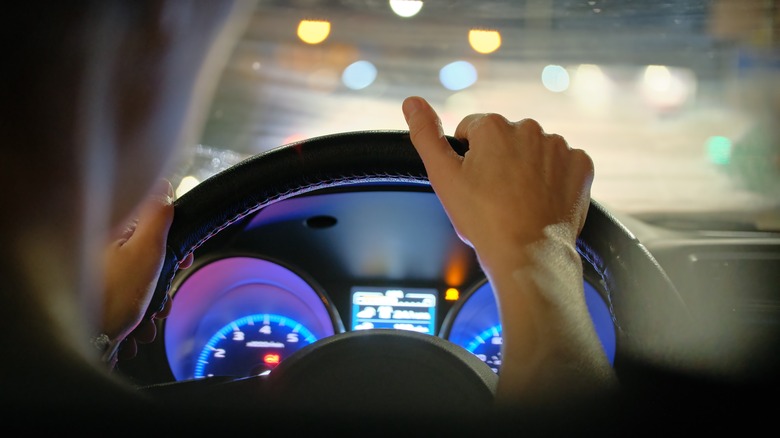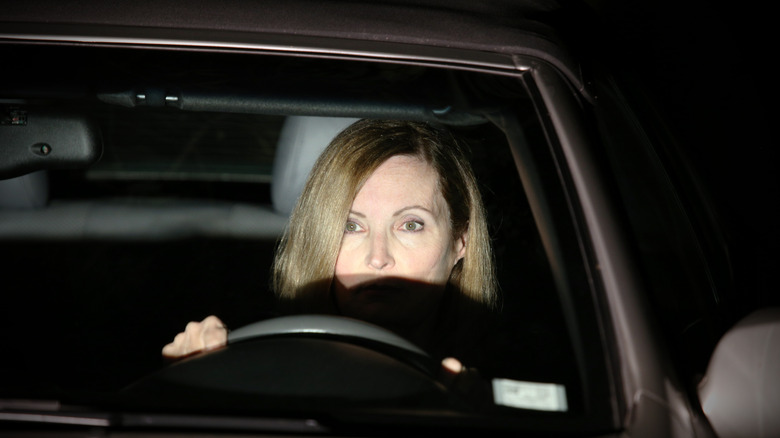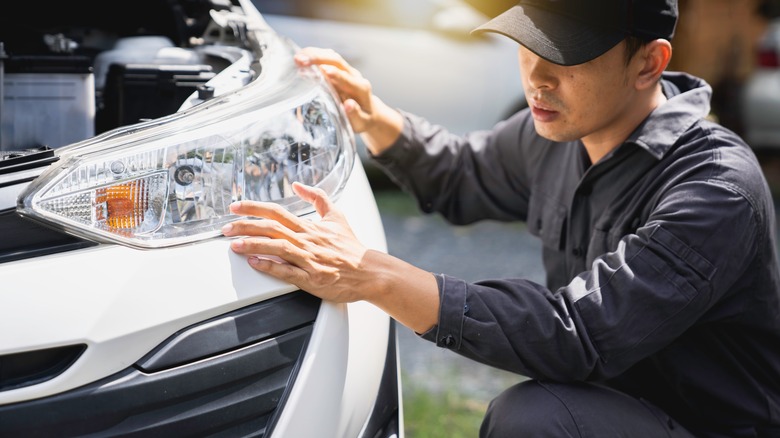Why Modern Headlights Are So Bright (And Why That Might Change)
It's a familiar experience: You're driving down the road when a vehicle approaches in the opposite direction with its headlights shining bright, and you're temporarily blinded by the glare, unable to see anything in your path. These situations can leave you disoriented and wondering if it was your imagination, or if headlights are just too bright for safe driving. If so, rest assured you're not alone. According to a 2022 study of 2700 drivers by RAC, almost 90% of UK drivers said some or most headlights were too bright and dazzled them while driving. In the U.S., as far back as 2001, a National Highway Traffic Safety Administration (NHTSA) survey found that 30% had experienced "disturbing" nighttime glare from headlights of oncoming traffic and vehicles following them.
The problem became so concerning that in 2022, General Motors recalled 740,000 small SUVs in the U.S. because of the glare the headlights caused to oncoming drivers. It wasn't always this way. From the 1950s to the 1980s, vehicles used sealed-beam headlights, which didn't produce enough light to keep drivers safe on the road. Fast forward a few years to the late 1980s and early 1990s, and halogen headlights with tungsten filaments appeared on the scene, with increased light output and better road illumination. However, the car industry didn't stop there. As technology continued to improve, so did headlights, transforming nighttime driving visibility.
The shift to brighter headlights
Advancements in lighting technology and a growing focus on road safety prompted the automotive industry's shift to brighter headlights, with the most significant changes occurring in the late 1990s and early 2000s, when automakers began switching to high-intensity discharge (HID) or light-emitting diode (LED) headlights. These newer headlights were more energy-efficient and lasted much longer than halogen headlights, all while producing a brighter, whiter light, which significantly enhanced nighttime visibility and road safety.
The higher lumens-per-watt ratio compared to halogen bulbs allows these new technologies to deliver brighter illumination on the road. LED headlights produce a more focused and higher-intensity light beam than their halogen predecessors, so they're perceived as much brighter. While this technology has greatly enhanced safety by helping drivers identify obstacles, pedestrians, and road signs more easily, it has come at a cost — blinding other drivers. This can be especially problematic when drivers are approaching from the opposite direction, but can also cause problems when bright headlights shine in a driver's rearview mirror.
The proliferation of SUVs and large pickup trucks with headlights positioned higher off the ground than sedans and smaller cars has also contributed to the problem. The height of these vehicles means the headlights are more aligned with the eye level of drivers in standard-height cars, which can increase the intensity of light that reaches their eyes.
The future of headlight technology and regulations
Relief from the blinding lights of oncoming vehicles is on its way, with the NHTSA recently approving the first substantive update to the lighting standards since the 1970s. The new regulation allows adaptive driving beam (ADB) headlights, also known as smart headlights, which use cameras and sensors to assess road conditions and detect the position of oncoming vehicles, adjusting the direction and intensity of the headlight beams accordingly.
They do this by automatically dimming certain parts of the beam to avoid shining directly into the eyes of other drivers. Improved road safety is arguably the most important benefit of using ADB headlights. Their ability to reshape the light they emit in real time could help reduce glare-related accidents at night. It'll be a few years before ADB technology is widespread in cars throughout the United States, but at least we know it's on the horizon. With these smart headlights, drivers will be able to see the road clearly without blinding others.


